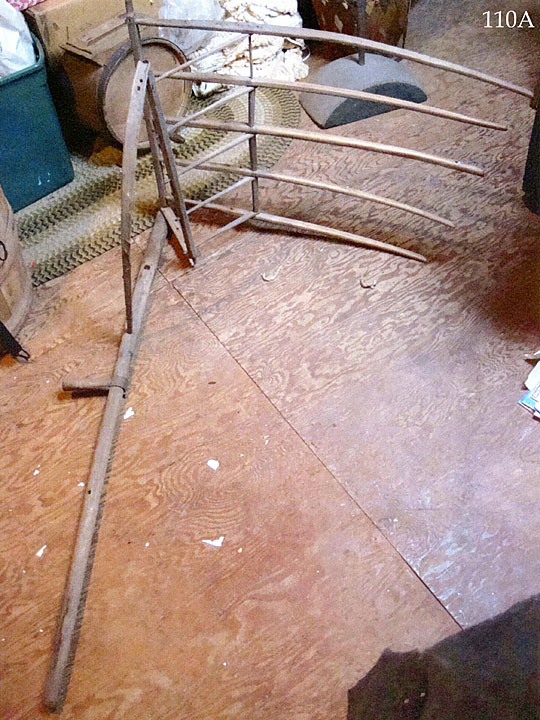The Dominys supplemented income from their skilled trades with farming, mainly renting parcels of their 100-acre holding in East Hampton township to other farmers in exchange for portions of the harvests. For family and neighbors, they made and repaired a wide variety of tools needed to raise field crops and manage livestock, including ploughs, rakes, grain cradles, and at least three different types of yokes.
Above: Thomas Moran, The Old Bridge over Hook Pond, East Hampton, Long Island, New York, c.1907. Oil on canvas. High Museum of Art
Grain cradles were used to align, stack, and mound hay, wheat, flax, and other crops cut with scythes. Shop records show that Nathaniel IV made one grain cradle in 1767, and Nathaniel V made eighty-four between 1790 and 1848, charging between 8 and 16 shillings for each. In 1811 Timothy Miller paid Nathaniel V 10 shillings for this example, the equivalent of more than a day’s wages for skilled labor, at a rate of 7 shillings, 6 pence per day.
Grain cradle, made in the Dominy shop, East Hampton, New York; 1811. Oak, maple, ash, hickory, iron. Private collection


This yoke could be soaked in water to make it pliable enough to open and place around the neck of a kid. The projecting handles helped with control of the animal’s movement. On the 100 acres of farm land owned by the Dominy family, goats and sheep were raised for both their wool and meat.
Goat yoke, probably Nathaniel Dominy V, East Hampton, New York; about 1830. Bequest of Henry Francis du Pont 1969.9195
Flax and wool produced by the farm were processed into textiles by the Dominy family. Nathaniel V made spinning wheels, a yarn reel, and this whalebone swift, which he presented to his wife, Temperance, after their marriage in 1794. Yarn skeins of differing radii could be fitted onto the variably adjustable ribs and were held in place by gravity tension. The swift slowly rotates around the center axis as the user takes up yarn from the skein and winds it by hand into balls for knitting.
Swift, Nathaniel Dominy V, East Hampton, New York; about 1800. Whalebone, mahogany, brass, copper. Museum purchase 1963.156.1

